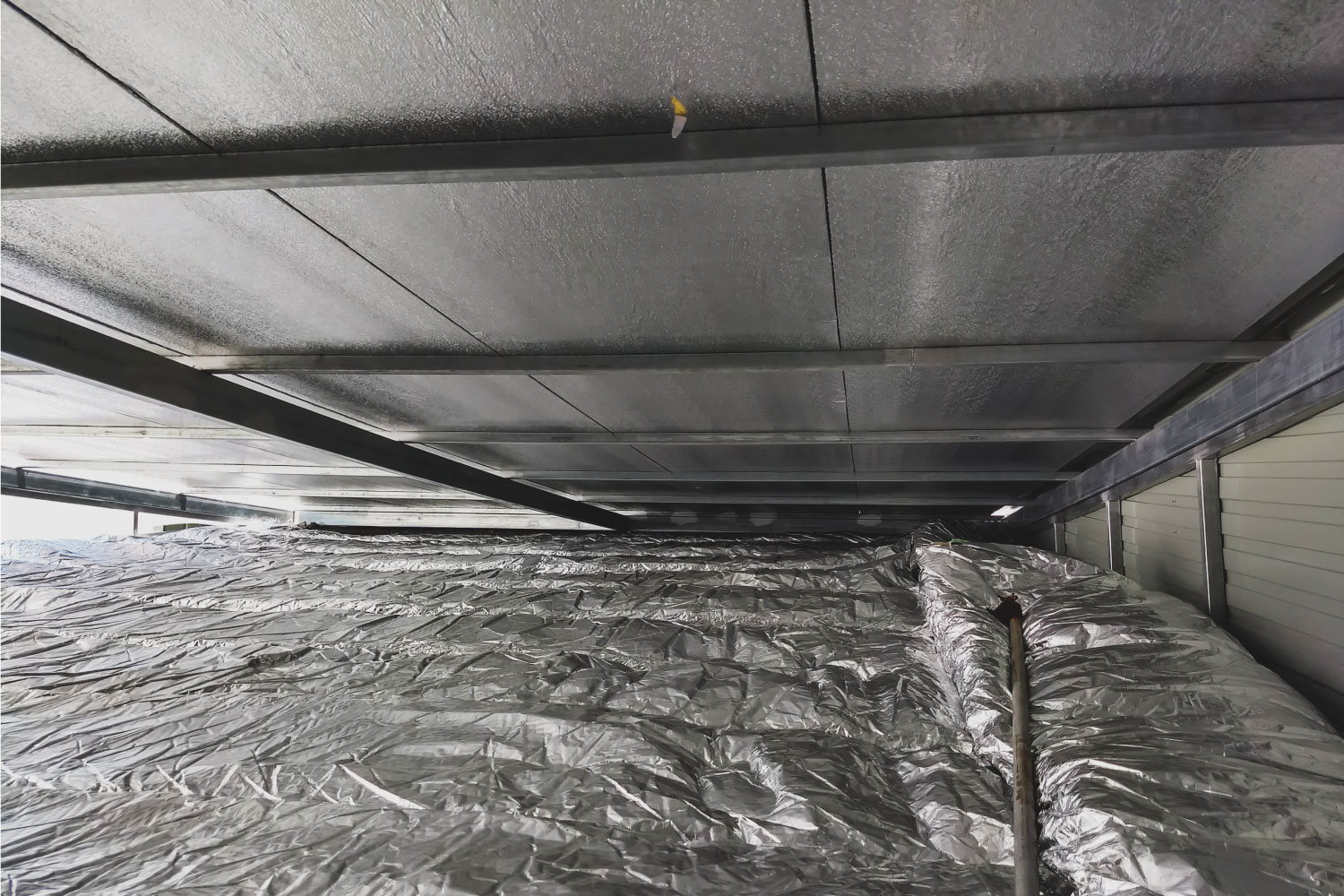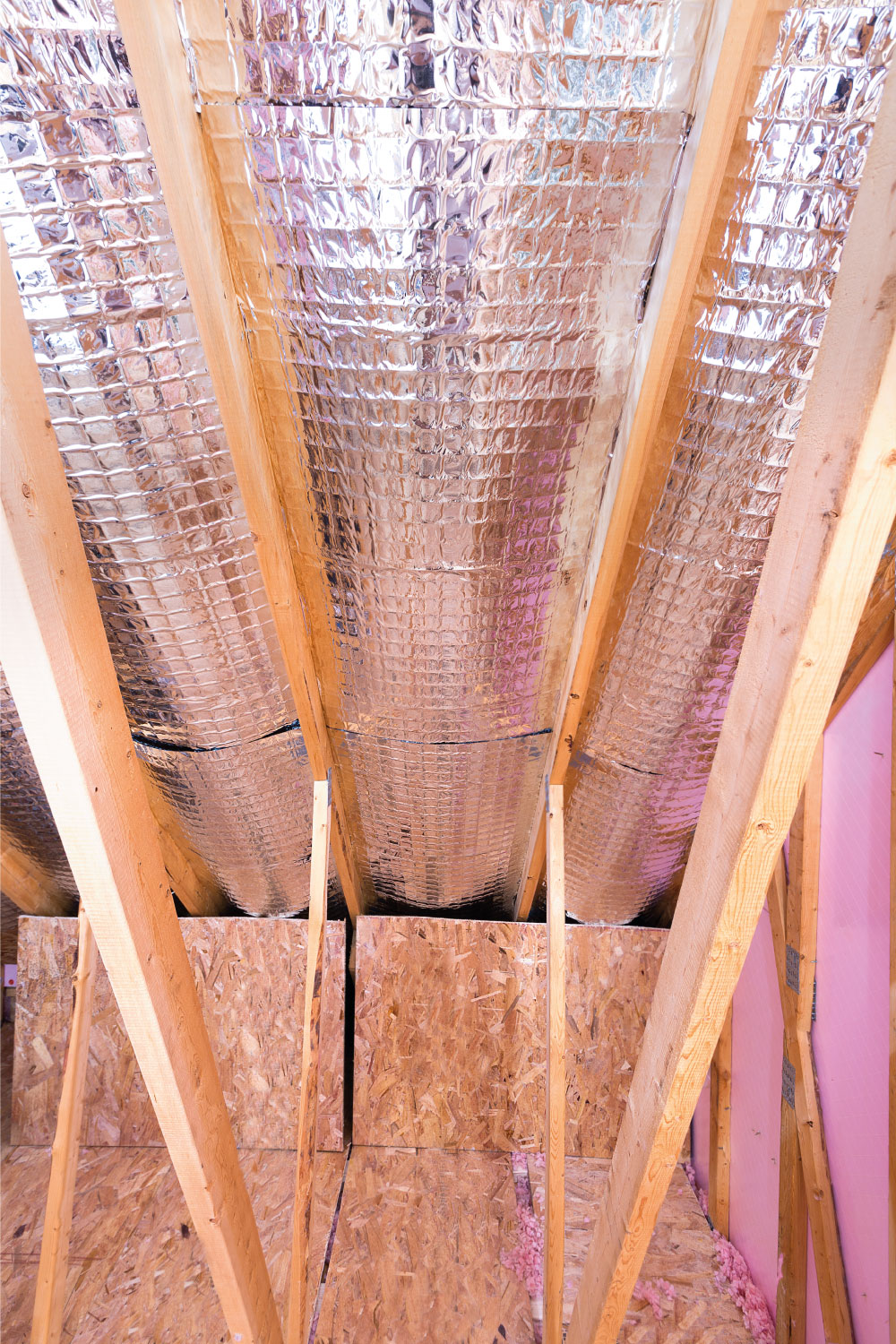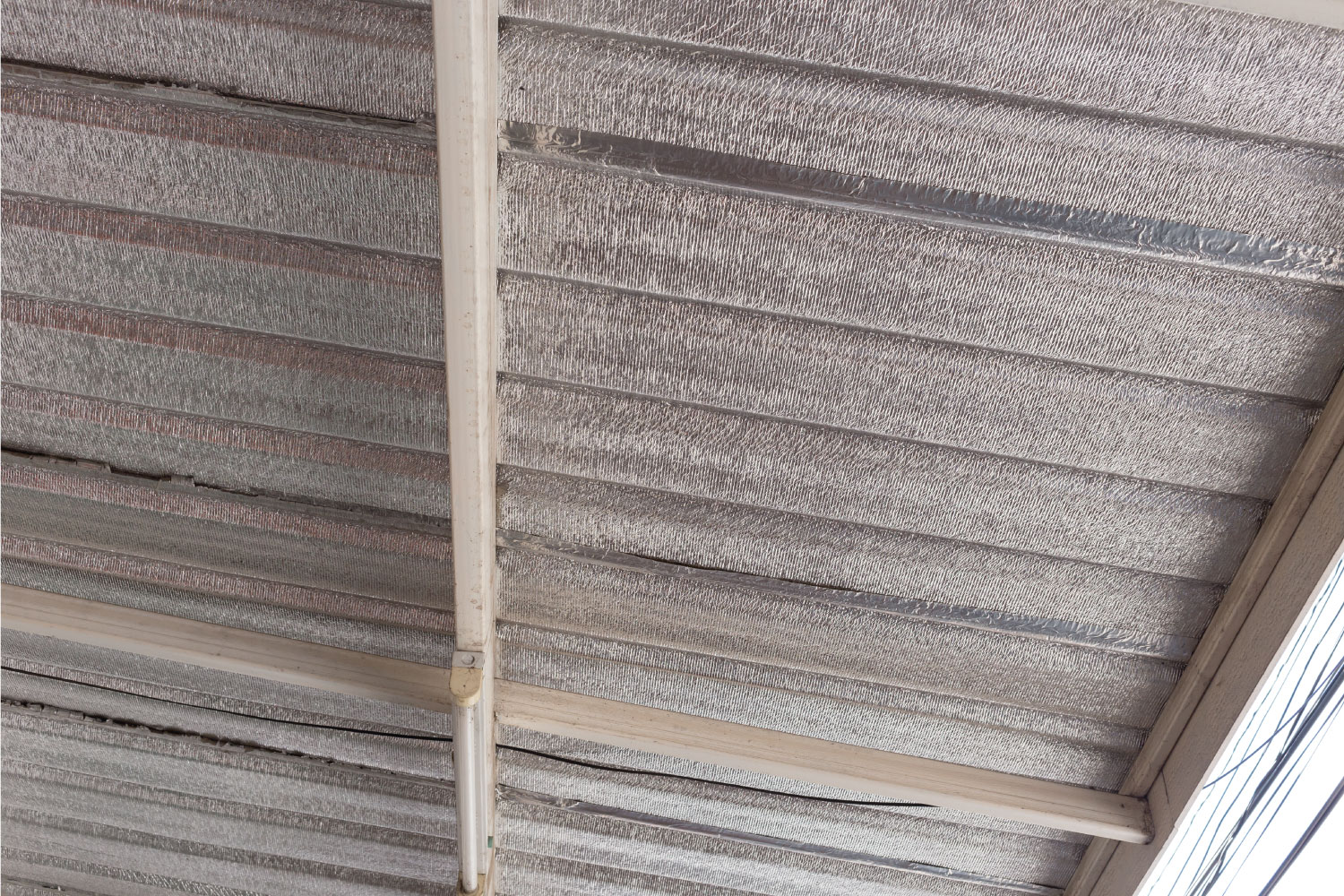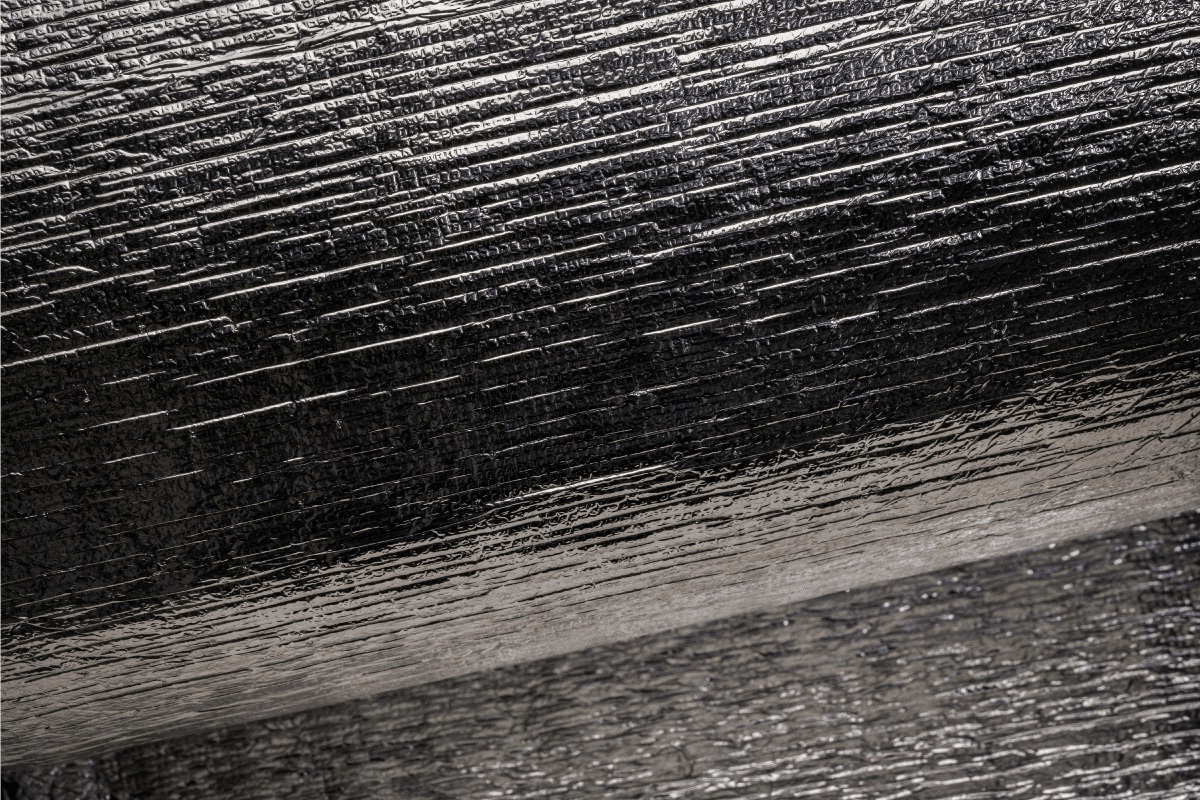Did you recently add a radiant barrier to your walls, and you’re wondering if you can install drywall over it? Wonder no more, for we researched this question, and we have the answer for you.
Yes, you can install drywall over a radiant barrier, but only if there is a space of at least half an inch thick between the drywall and the radiant barrier.
Confused why there should be a space between the drywall and the radiant barrier? The succeeding sections explain how radiant barriers work and why that space for air is important. Read on!

How radiant barrier works
This section will explain how heat travels from one material to another. It will then explain how radiant barriers prevent the transfer of heat into your home.
How is heat transferred?
Heat travels from a warm area or object to a cooler area or object through convection, conduction, and radiation. Convection is when heat expands gas or liquid, and it becomes lighter (moving upwards), then it becomes heavier once more as it cools.
Conduction is when heat travels through a medium, just like how a teaspoon becomes warm when placed in a hot cup of coffee. Radiant heat travels in a straight line away from a warm surface.
How does a radiant barrier reduce heat transfer?
When the sun warms the exterior side of your wall, radiant heat will come from the warm wall and warm the surrounding air and get into your home.
A radiant barrier reflects this radiant heat back to the air instead of letting it pass. If there is no trapped air between the radiant barrier and the exterior wall, the radiant barrier will become useless because the wall will transfer heat to it through conduction.
The air between the radiant barrier and the exterior wall limits the heat transfer to a radiant type of heat transfer that the radiant barrier can simply reflect back.

How to properly install drywall over the radiant barrier?
Ideally, the radiant barrier should be installed over the exterior wall sheathing under the siding. This gives the radiant barrier enough space to keep heat away from your walls. Keep in mind that insulation slows down heat transfer through conduction. It doesn’t stop it completely.
However, for existing wall installations, here is the right way to install drywall over a radiant barrier.
How to install radiant barrier for west-facing exterior walls?
A west-facing wall easily becomes very hot during summer. The afternoon sun will heat up the walls, and the wall will transfer that heat to the regular insulation.
Here is how to stop most of that heat from getting transferred:
- Cut a rigid foam board strip that is half an inch to a three-eighth inch thick.
- Apply foam board adhesive on the wider side of the rigid board insulation.
- Attach the rigid board insulation on the exterior sheathing where it meets the stud. Install another rigid foam board strip on the other side of the exterior sheathing, at the middle and horizontally at the bottom. Add a horizontal foam board strip at the topmost edge of the wall.
- Install the radiant barrier on the rigid foam board. Fasten it with staples on the side of the rigid foam board and on the side of the studs.
- Seal the areas where the staple wires were attached with aluminum tape. Use aluminum tape to seal the seams between the radiant barriers.
- Repeat these steps until you have covered the wall with radiant barriers.
- Install batt or board insulation over the radiant barrier layer. Keep repeating this step until you have covered the entire wall with insulation.
- To improve the R-value of the west-facing wall, install a rigid foam board over the initial insulation. Apply caulk on the floor to create an air seal with rigid foam insulation.
- Keep installing until you’ve covered the wall with an unbroken layer of rigid board insulation. Cover the gaps between the rigid form board with polyethylene tape. This is to stop thermal bypass through the studs of the wall.
The INSULATION MARKETPLACE SmartSHIELD engineered foil with foam core radiant barrier is available on Amazon. Check it out through this link.

How to install drywall over a radiant barrier on the ceiling?
Installing a radiant barrier on the ceiling provides the benefit of keeping warm air inside the house. Heat transfer through natural convection will cause warm air to become lighter. Lighter air will travel upwards and can get lost through the attic.
Installing a radiant barrier inside the ceiling will reflect the heat back into the living areas of your house and help keep it warm during winter.
- Apply adhesive on one layer of the radiant barrier. The reflective side of the radiant barrier should face the inside of the house.
- Install the radiant barrier on the existing ceiling.
- Repeat the first two steps until you have covered the entire ceiling with a radiant barrier.
- Trim half an inch of rigid foam board.
- Apply an even layer of foam board adhesive on the rigid foam board strip. Keep in mind that adhesives that are not made to be used with rigid foam boards can melt it and become useless at making it adhere to the surface of the ceiling.
- Install the foam board strip along the joists.
- Repeat until you have a foam board strip along all the joists.
- Install a new drywall layer on top of the foam board strip. Screw it firmly onto the joists.
- Complete the installation with your chosen finish.
The 3M 78 polystyrene foam insulation spray adhesive is available on Amazon. Check it out through this link.
What are the limitations of a radiant barrier?
Now that we’re done with the installation steps to help keep the blistering summer heat out and the warm air inside during winter, let’s talk about some of the limitations of a radiant barrier.
Dust
Radiant barriers reflect back heat because of their shiny reflective layer. Thus, it is not a good idea to install a radiant barrier where that reflective layer can get covered by dust or similar deposits.
A good example is a radiant barrier installed in the attic facing the roof and is left there exposed. Chances are, it will no longer be as effective when it was first installed after a few years that it is there gathering dust and debris.
When installing a radiant barrier, always think of how you can protect it from dust so that its effectiveness will not get diminished over time.
Warm only
Radiant barriers may be great at sending back heat, but it doesn’t do anything to keep the cold at bay. Thus, always remember that a radiant barrier is not a replacement for good insulation against the cold of winter.
What a radiant barrier can contribute to your home in winter is to keep warm air inside. However, without a source of heat, it will not have anything to keep inside the house.
InspectAPedia recommends installing a radiant barrier on the underside of the roof sheathing or the roof deck. This will allow the radiant barrier to reflect warm air back into the house and provide savings of up to 12%.
Perpendicular to source
Radiant barriers are best installed where they can be perpendicular to the source of radiant heat. If installed on your roof to reflect the heat of the summer sun, then you’d stand to benefit from reduced cooling costs.

Does radiant barrier block Wi-Fi?
After installing all that radiant barrier in your home, you might be starting to worry if it will affect your Wi-Fi signal. Maybe you’ve heard people say that it will prevent Wi-Fi from working because it will bounce against the radiant barrier.
RIMA (Reflective Insulation Manufacturers Association International) says that there is only minimal effect because the metal (commonly aluminum) in radiant barriers is only a few microns thick. And this minimal impact on your Wi-Fi signal will only happen if the radiant barrier is between you and the Wi-Fi router in your home.
How long does a radiant barrier last?
Leading studies have shown that thousands of American homes have had radiant barrier installations during the last decade and have not seen any significant issues from it.
The important thing to consider is to install it where it can stay relatively dust-free for a long time, as we’ve mentioned earlier. Your radiant barrier will keep working as long as it can keep its surface shiny.

Conclusion
Drywall installation over the radiant barrier is possible as long as there is a trapped pocket of air at least half an inch thick between the drywall and the radiant barrier. It is also important to know where the radiant barrier should face when it is installed.
If you enjoyed reding this article, why not check out these other two interesting articles:


